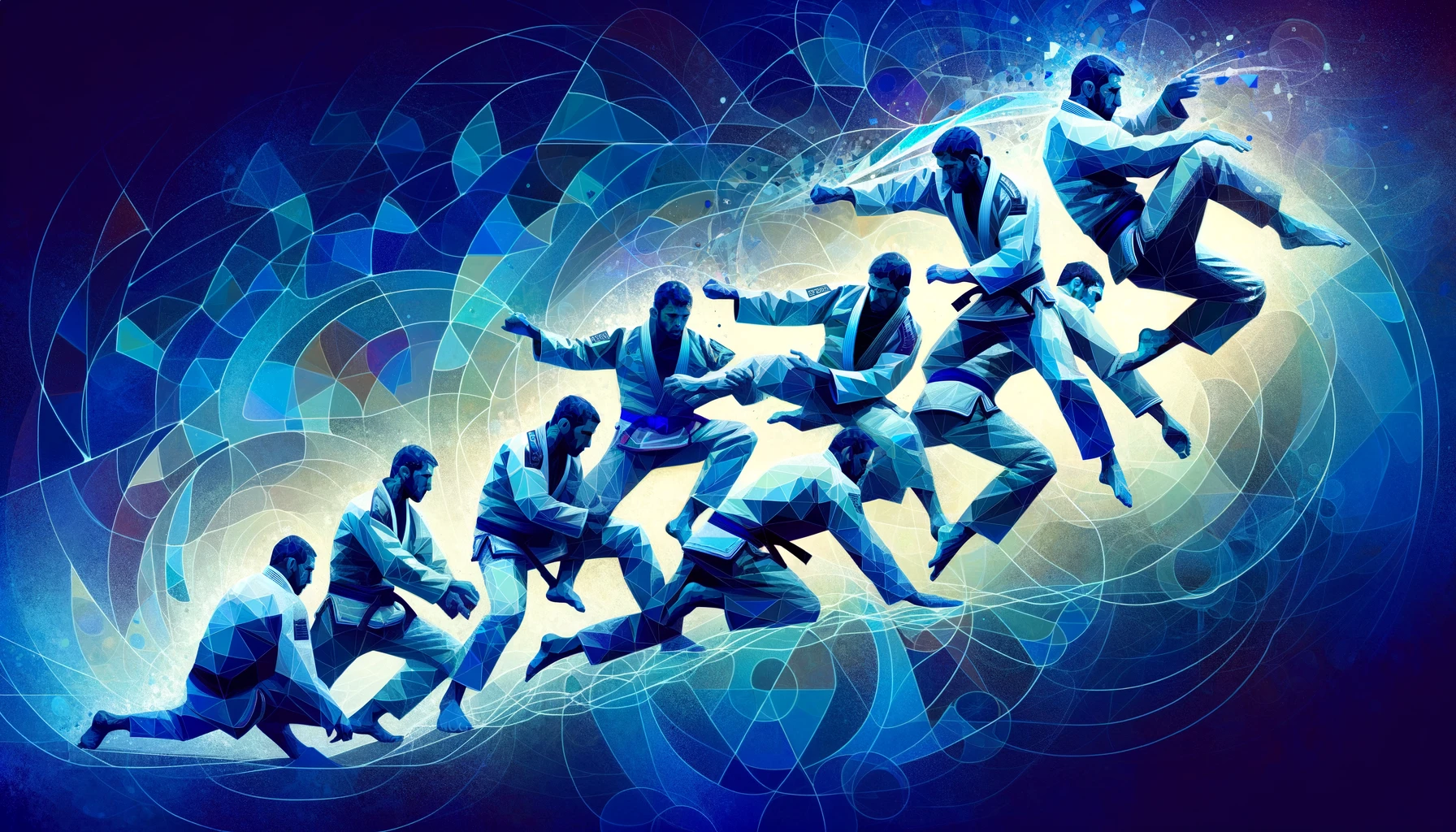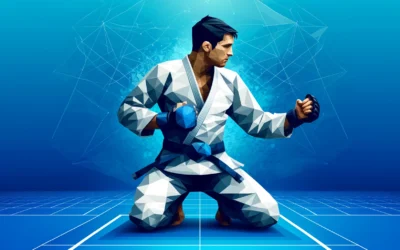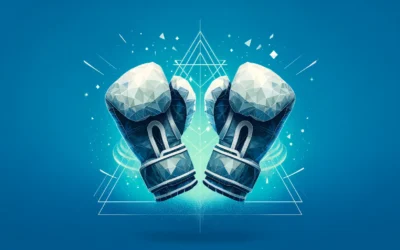Brazilian jiu-jitsu (BJJ) has experienced an unprecedented evolution over the past few decades, transforming from a relatively unknown martial art to a global sporting phenomenon. This technical revolution has seen BJJ develop into one of the world’s most sophisticated, effective grappling systems. This article will delve into some of the key factors that have driven BJJ’s rapid growth and technical development.
Striking vs. Grappling: Early Perceptions
In the early days, striking arts dominated the public’s perception of real fighting skills. Arts like boxing, kickboxing and karate, focused on punching, kicking and knocking opponents out, were seen as the pinnacle of the martial arts world. The notion that grappling-based styles could be applied effectively for self-defence or real fights was not taken seriously.
When BJJ first emerged in North America in the 1990s, it was met with scepticism. At that time, few people believed grappling could overcome a skilled striker. BJJ was seen as weird and exotic, an obscure style only practised by a niche group of enthusiasts. The overwhelming majority opinion was that grappling was not an effective form of fighting compared to punching and kicking.
The Gracie Challenge
This perception slowly began to change as BJJ fighters like Rorion Gracie issued public challenges to fighters of other styles to prove the effectiveness of their techniques. Rorion famously offered a $100,000 prize to anyone who could defeat him and his family members using any style.
People began to take note when these Gracie challenges invariably ended with the BJJ practitioner victorious. It demonstrated that grappling arts like BJJ could negate devastating striking attacks using their techniques. What viewers realized was that fights inevitably end up on the ground, and skills to control opponents in those ground positions gave BJJ practitioners an enormous advantage.
The UFC and the Rise of NHB Fighting
The advent of no-holds-barred (NHB) fighting competitions like the early Ultimate Fighting Championships provided the perfect proving ground for BJJ. When Royce Gracie used BJJ techniques to great effect in the first few UFC events, it shocked martial artists worldwide.
Their long-held notions about the supremacy of striking arts were upended entirely. It kickstarted a revolution in the martial arts community and increased the popularity and legitimacy of BJJ.
As the UFC continued putting different martial arts styles up against each other, the sheer effectiveness of BJJ techniques became undeniable. Fighters using boxing, karate, kickboxing and other striking styles could not deal with being taken down and controlled on the ground.
The hard evidence provided by live fights showed that grappling arts were perfectly viable as self-defence and fighting methods, arguably even more effective than punching and kicking in many cases. This revelation was a watershed moment for both BJJ and martial arts in general.
Limitations of Early BJJ
Despite the dominance of early BJJ fighters, the art did have some noticeable technical limitations in the beginning. Brazilian jiu-jitsu started off with a minimal focus on attacking the legs or feet using locks and submissions. The overwhelming majority of attacks focused on the upper body.
Arm locks, shoulder locks and chokeholds were heavily developed. But leg locking was a huge technical hole, almost an afterthought. Early BJJ also lacked a developed system for takedowns and throws. Guard pulling and butt scooting were often the only recourse for taking fights to the ground.
So while highly effective, especially compared to other styles at the time, BJJ did have some apparent areas needing development to become a complete grappling system.
Forcing Technical Evolution Through Competition
The advent of BJJ competitions was the catalyst that drove evolution in these weaker areas. With submissions being the fastest way to end matches, holes in an aspect as significant as 50% of the human body in leg locks became obvious. As soon as tournaments began regularly incorporating points for takedowns, the lack of good takedown skills also became glaring.
The competition also increased cross-pollination between different BJJ schools and styles. This exchange of information and techniques enabled rapid advancement. Combined with the constant pressure testing against fully resisting opponents, competitive BJJ events forced technical innovation at an unprecedented pace.
Developing the Guard Game
In the early UFC events, most competitors had rudimentary ground skills. So BJJ fighters relied heavily on dominant top positions like the mount and back control to easily submit opponents. But as opposition grappling got better, BJJ players realized they needed more sophisticated bottom techniques to deal with skilled wrestlers and judo players taking them down.
This necessity drove huge innovations in the guard position. De la Riva guard, spider guard, dynamic guard and other sophisticated bottom techniques were developed to allow BJJ practitioners to attack from their backs. It enabled them to submit even highly skilled opponents who scored takedowns against them. This “guard game” remains a central pillar of BJJ today.
Leg Locks – Closing a Technical Hole
As noted earlier, leg locks and foot locks were essentially an afterthought in early BJJ. But as tournaments began rewarding their use, practitioners were forced to develop sound leg-locking systems. This was a monumental shift from the previous haphazard, opportunistic use of leg locks.
BJJ coaches began deconstructing leg locks, analyzing entries, controls and finishing mechanics much like they had long done for arm locks and chokes. Leg control positions like the ashi garami offered the same submission potential as an armlock from mount, but attacking the legs rather than arms.
Once leg locks became part of an integrated ground game based on controlling limbs and joints, they transformed from a novelty into a fundamental pillar of a complete grappling system. Today, the leg-locking expertise of elite BJJ fighters is higher than almost any other grappling style.
Developing Takedowns Tailored to BJJ
Evolving the takedown game faced an additional layer of complexity. Unlike wrestling and judo, BJJ competitors fought in gis, and submissions were legal. This shifted the optimal techniques compared to takedowns designed for pinning or out-of-bounds throws.
BJJ’s focus on positional control also demanded changes. Many high-amplitude judo throws left throwers vulnerable to counters. So lower amplitude techniques that ended in dominant positions became favoured. BJJ’s guard pulling and butt scooting introduced unique tactical considerations absent in other arts when developing standup.
Instead of just copying takedowns from wrestling and judo, BJJ needed to tailor and modify them based on its unique context. Coaches began developing situational training drills to pressure test takedown applications under rules specific to BJJ events.
While historically the weakest area of BJJ, the level of standup techniques explicitly tailored to BJJ competition has risen tremendously thanks to an increasingly systematic focus on this part of the art.
The Scientific Method in BJJ
What enabled such incredible technical progress in BJJ? Much of it can be attributed to applying an informal “scientific method” within training. Instead of accepting techniques based on tradition or dogma, BJJ coaches and athletes adopted an evidence and experiment-driven approach.
Progress began by clearly identifying weaknesses and flaws in the current technical understanding. Rather than an emotional attachment to the status quo, BJJ embraced identifying problems.
Once problems were identified, hypotheses were developed, tested and refined to find solutions. Live sparring enabled trial and error experimentation. Technique variations were stress tested and discarded if they failed or embraced if they worked.
Open sharing of information between coaches and athletes enabled rapid knowledge development. Online resources and instructionals allowed techniques to spread worldwide at unprecedented speed.
While simple in essence, this fundamental process of problem identification, hypothesis testing, and information exchange enabled generations of BJJ practitioners to stand on the shoulders of those who came before them, incrementally expanding the art’s technical knowledge.
Specific Sparring
An important training method that emerged in support of this scientific approach is specific sparring. This involves free sparring under constraints that mimic a specific situation, such as only from a defined position like side control or turtle.
Specific sparring accelerates skill acquisition by maximizing the repetition of a particular scenario. The continued exposure under live conditions provides valuable feedback about flaws and limitations in technique and strategy. It enables rapid experimentation.
The intensive nature of specific sparring produces large volumes of high-quality training data. This facilitates identifying improvements compared to more varied sparring, which spreads time thinly over many situations. Intelligently targeted specific sparring allows rapid identification and resolution of weaknesses.
The Culture of Kaizen in BJJ
A key cultural factor enabling the continuous evolution of BJJ is the concept of kaizen – the philosophy of constant, incremental improvement. Instead of achieving competence then stagnating, the mindset embraced is one of perpetual refinement.
Even the best black belts drill fundamentals daily. No technique is seen as ever perfected. There are only levels of proficiency to be enhanced. Mistakes are opportunities for learning, not embarrassment. Higher belts are expected to submit lower belts the vast majority of the time, exemplifying the focus on constant progress.
This growth mindset manifests in the saying, “a black belt is just a white belt who never quit.” Through small daily improvements accumulated over decades, moments of insight add up to produce major technical leaps over time. BJJ’s culture of kaizen ensures the technical knowledge of the art and individuals within it is always expanding.
Case Study: The Evolution of a World Champion
The technical journey of elite competitors provides insight into how these factors combine to drive rapid skill development. BJJ legend Roger Gracie improved tremendously over his competitive career, exemplifying technical evolution at an individual level.
In the early days, his skill set was heavily focused on a few core techniques that he successfully used against his contemporaries. But he was never satisfied at plateauing. As the sport’s skill level increased, he expanded his game dramatically.
Where Roger once relied heavily on a narrow group of techniques like cross collar chokes, later in his career, he grew lethal with a diverse array of submissions from every position. This transformation resulted from continually identifying and addressing weaknesses.
Each year, Roger targeted new techniques to integrate into his game. Intense specific sparring and competition pressure testing refined them. He tapped some of the greatest grapplers in the world by applying this process of continuous expansion and refinement.
The Evolution of Brazilian Jiu-Jitsu
From a questionable niche art to a global sport, BJJ has experienced staggering technical progress in just a few short decades. Much of this rapid evolution can be attributed to an informal scientific approach of iterative hypothesis testing guided by competition pressures.
A culture focused on perpetual incremental improvement rather than static proficiency enabled continual refinement. And embracing error as a learning tool rather than something to avoid led to increased creativity.
The exceptional technical capabilities displayed by today’s BJJ practitioners underscore the effectiveness of this empirical methodology. Other martial arts have thrived for centuries using traditional knowledge transmission and more dogmatic culture.
Perhaps there are lessons to be learned from BJJ’s rapid technical progress via structured experimentation, data-driven evaluation and knowledge sharing that could benefit practitioners of all martial arts seeking to evolve.





0 Comments